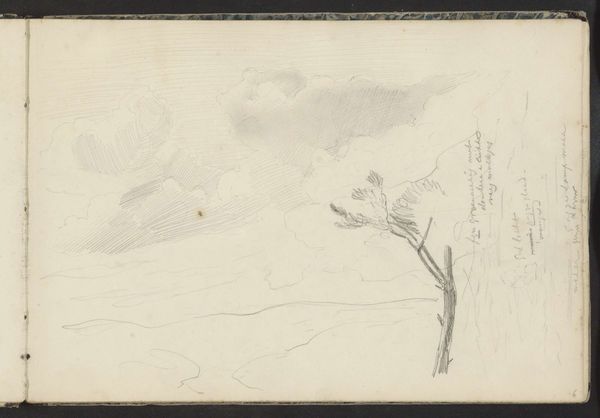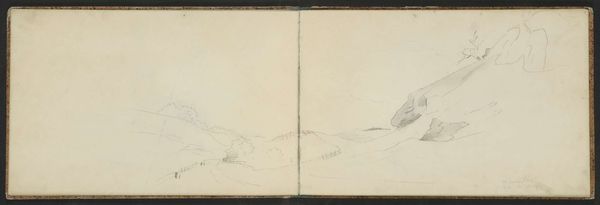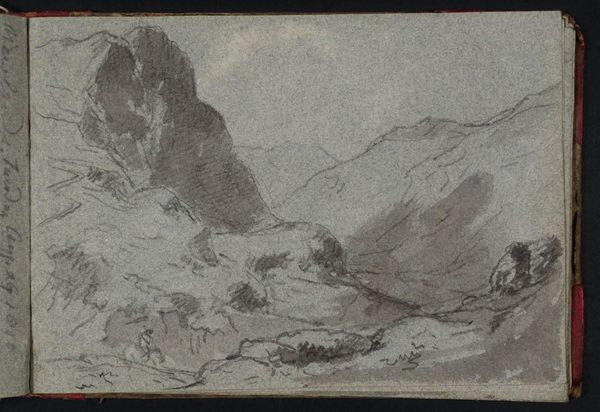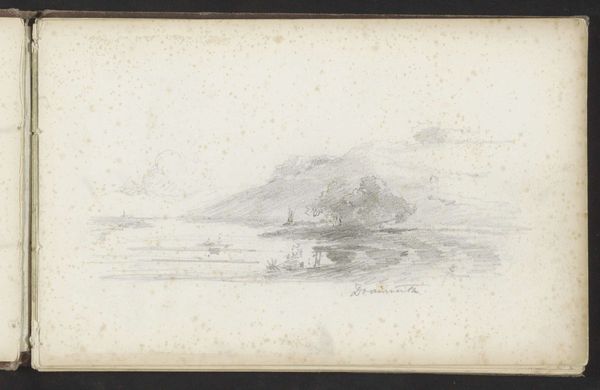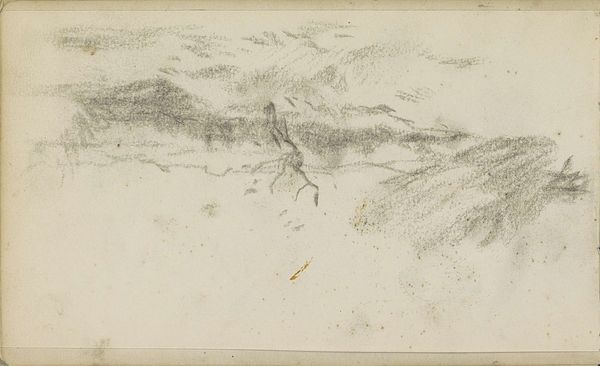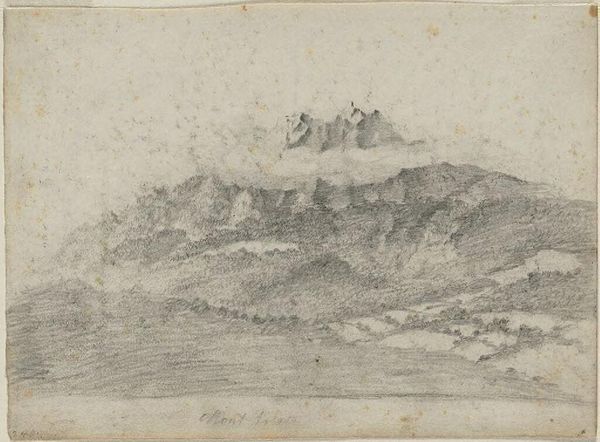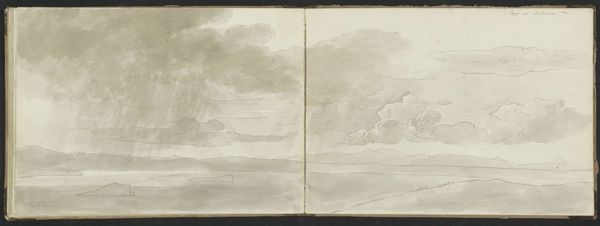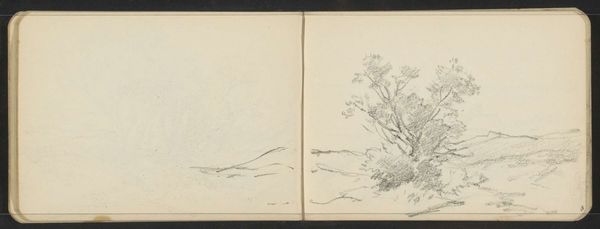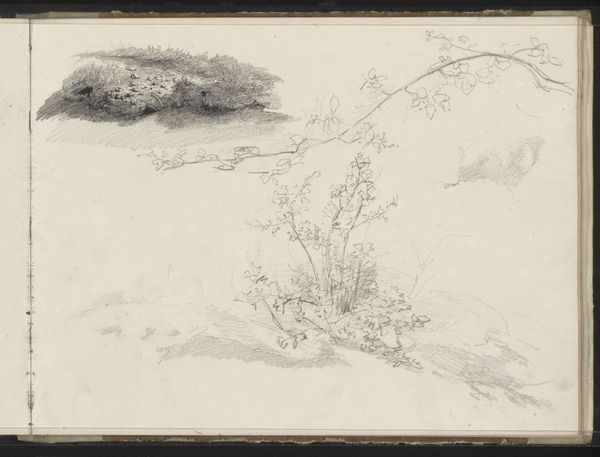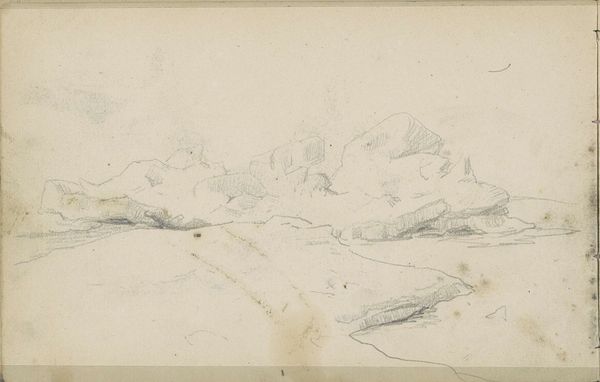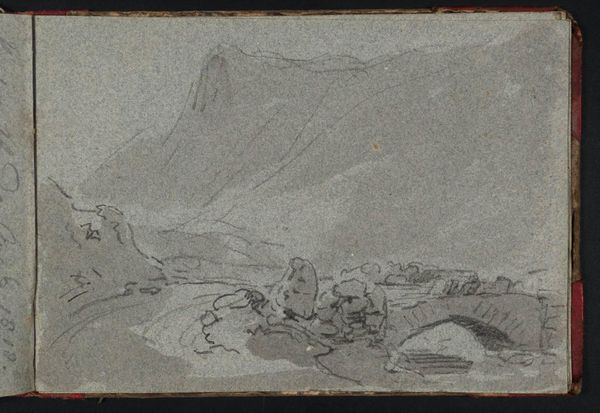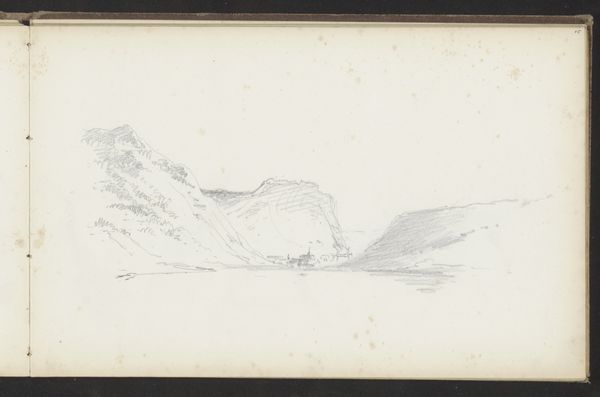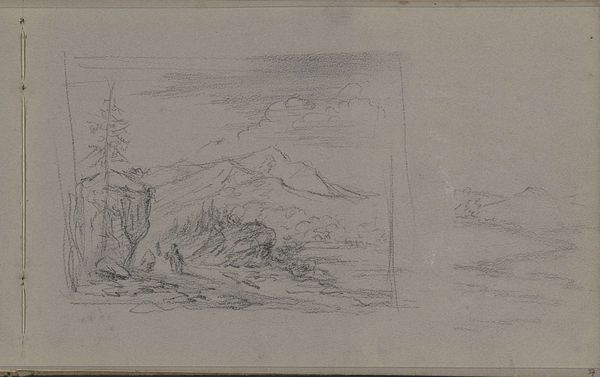
Landschap met bergen, rotsen en een pad langs een waterweg c. 1871 - 1878
0:00
0:00
Copyright: Rijks Museum: Open Domain
Curator: We are looking at "Landschap met bergen, rotsen en een pad langs een waterweg," or "Landscape with mountains, rocks and a path along a waterway" by Maria Vos, circa 1871-1878. It's a drawing rendered with pencil and coloured pencil on paper, currently held in the Rijksmuseum collection. Editor: The atmospheric effect is quite strong here. The stark contrasts between the dark foreground and the faint mountains in the distance certainly creates a sense of vastness, almost infinite space. Curator: Precisely. The Romanticist style really shines through. Vos’s handling of light and shadow, especially on the rocky outcrops, invites closer scrutiny of the composition. The strategically placed trees help establish depth, a clever compositional strategy that pulls you right into the scene. Editor: I am wondering about the use of pencils here. How was this paper made and treated to hold these markings? What pencils did she have access to, and how did they affect the mark-making process? I bet those materials played a crucial role in setting the tone of the final drawing. Curator: Absolutely. Thinking about semiotics, the pencil lines themselves function as signs, creating an indexical relationship with the represented landscape. It all works to enhance the artwork's illusionistic depth while at the same time creating texture that calls attention to its artifice, or medium. Editor: Right, that's true, but looking beyond pure aesthetics—thinking materially—consider how Vos might have encountered the site that prompted this image. How would this piece reflect an interest in accessing, possessing, and eventually marketing the landscape depicted? It really makes me appreciate the drawing in its specific context. Curator: I concede that an approach based in labor and social issues yields fascinating insights, but to really dig deep, you would have to spend hours decoding the pictorial space and consider the artist’s conscious deployment of form to guide the viewer's gaze in a structured, formalist reading of her intentionality. Editor: Yes, and understanding Maria Vos's materials and what the material constraints she would have been under is equally compelling. They both point to important aspects of the image's existence.
Comments
No comments
Be the first to comment and join the conversation on the ultimate creative platform.
